- Retour accueil
- Vous êtes ici : Blog The Pyramids of the Cold
The Pyramids of the Cold

The Pyramids of the Cold version 2
Publié par Bruno Coursol dans The Pyramids of the Cold le 13/05/2023 à 18:41
Please visit The Pyramids of the Cold v2 for a fully updated version of the study and the last Section and conclusion: the cooling water of spitting Kebechet. The Pyramids ...Lire la suite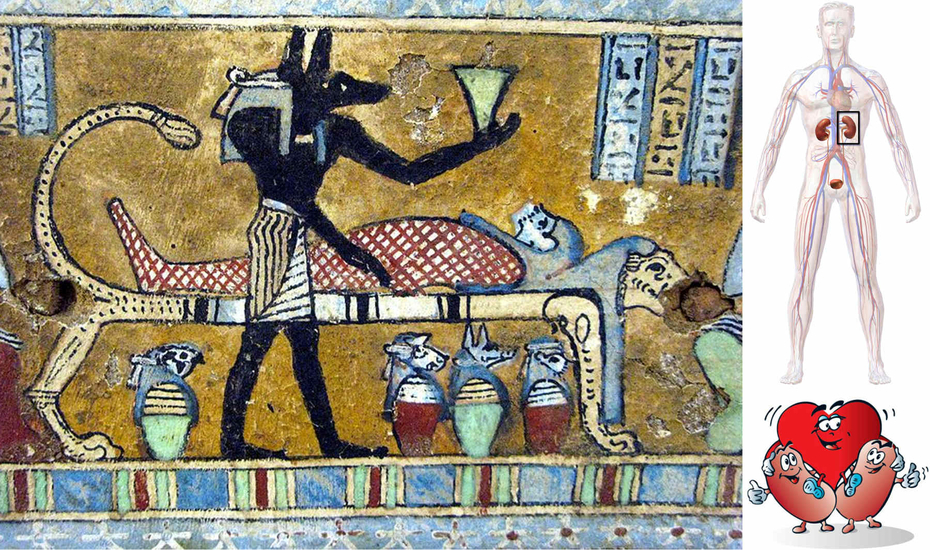
The Pyramids of the Cold Section 34 • The filtering kidneys of a smart traveler
Publié par Bruno Coursol dans The Pyramids of the Cold le 10/04/2023 à 10:50
The Pyramids of the Cold Section 34 • The filtering kidneys of a smart traveler In summary: the mummification process is probably the most noticeable aspect of the ancient Egyptian ...Lire la suite
The Pyramids of the Cold Section 33 • Thoth's Medes-Blade and the Writing metaphor
Publié par Bruno Coursol dans The Pyramids of the Cold le 01/04/2023 à 09:58
Polina Korobeynikova (Russia) at the 2012 Figure Skating World Championships; posted by Luu: https://en.wikipedia.org/wiki/Glossary_of_figure_skating_terms#/media/File:2012_WFSC_07d_843_Polina_Korobeynikova.JPG Writing image: https://www.wikihow.com/Have-Better-Handwriting#/Image:Have-Better-Handwriting-Step-11.jpg The Pyramids of the Cold Section 33 • Thoth's Medes-blade and the writing ...Lire la suite
The Pyramids of the Cold Section 32 • Anubis and the bobsled mask
Publié par Bruno Coursol dans The Pyramids of the Cold le 20/03/2023 à 13:36
The Pyramids of the Cold Section 32 • Anubis and the bobsled mask In summary: the deciphering of the operation of the Grand Gallery of the Great Pyramid continues with ...Lire la suite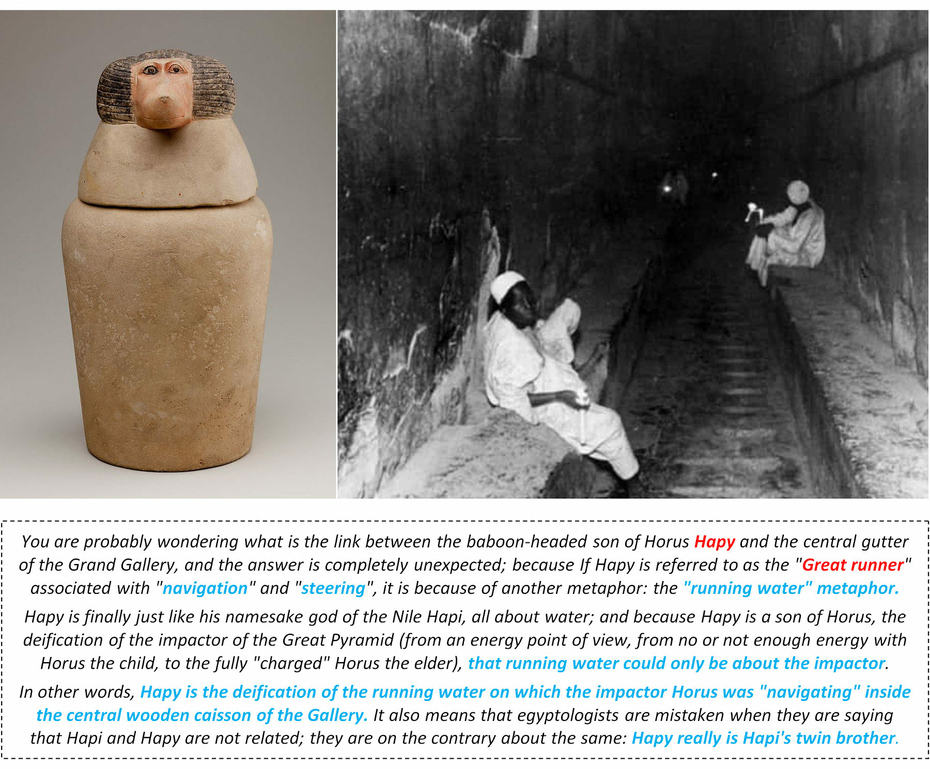
The Pyramids of the Cold Section 31 • Hapi's twin brother Hapy and the seven scorpions
Publié par Bruno Coursol dans The Pyramids of the Cold le 05/03/2023 à 17:26
Canopic Jar representing the deity Hapy 664–525 BC (late period), from the Metropolitan Museum of Art, New-York https://www.metmuseum.org/art/collection/search/543953 The Pyramids of the Cold Section 31 • Hapi's twin brother Hapy ...Lire la suite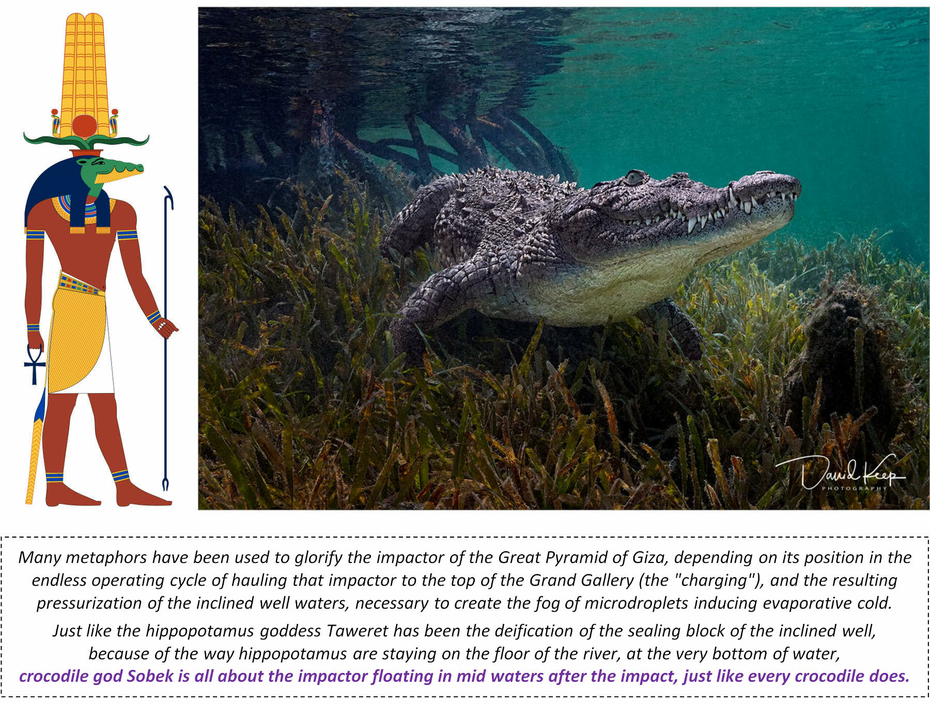
The Pyramids of the Cold Section 30 • Crocodile god Sobek's fishing net
Publié par Bruno Coursol dans The Pyramids of the Cold le 20/02/2023 à 11:05
Saltwater Crocodile at Jardines de la Reina, Cuba. © David Keep: https://www.davidkeepphotography.co.uk/latestnews/tag/Crocodile "Sobek, an ancient Egyptian crocodile god, often depicted with a crown composed of ram horns, a sun disk, ...Lire la suite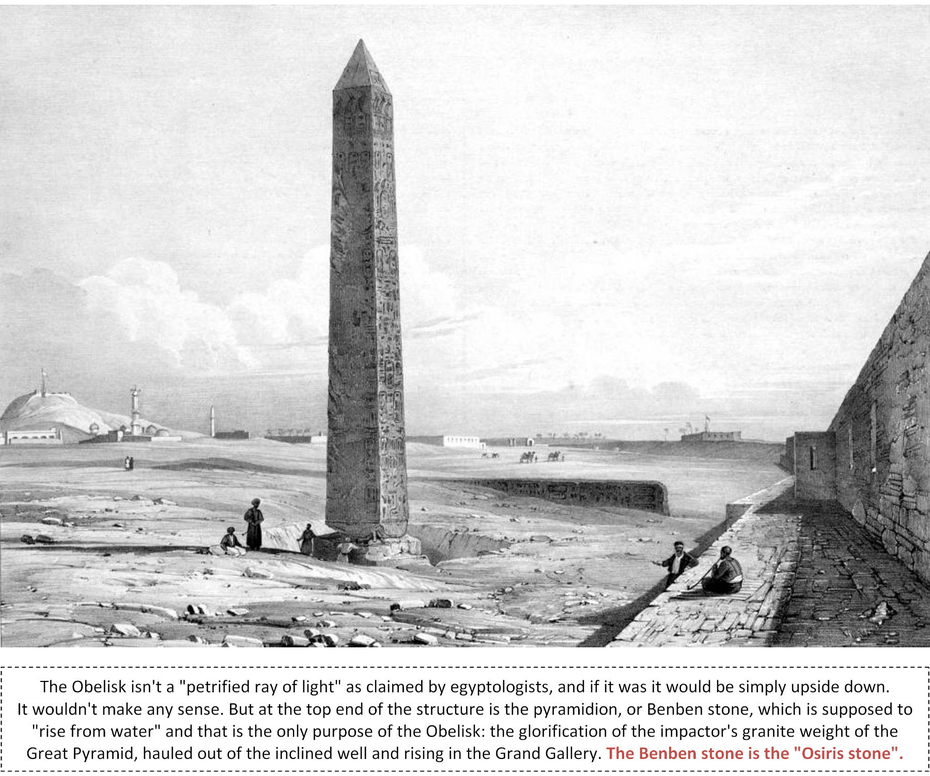
The Pyramids of the Cold Section 29 • The Obelisk and the Benben stone
Publié par Bruno Coursol dans The Pyramids of the Cold le 09/01/2023 à 09:56
Cleopatra’s Needle with Part of Alexandria taken from the North by “drawn on stone by from a sketch by Capt. Head.” Source: Eastern and Egyptian Scenery. 1833. Hathi Trust Digital ...Lire la suite
The Pyramids of the Cold Section 28 • The Elephantine Triad deification of the Biosand filter
Publié par Bruno Coursol dans The Pyramids of the Cold le 18/11/2022 à 18:15
We'll see in this Section that just like the Memphis Triad is representing the creation of evaporative cold by associating three deities who were the deifications of pressurized water (Ptah) ...Lire la suite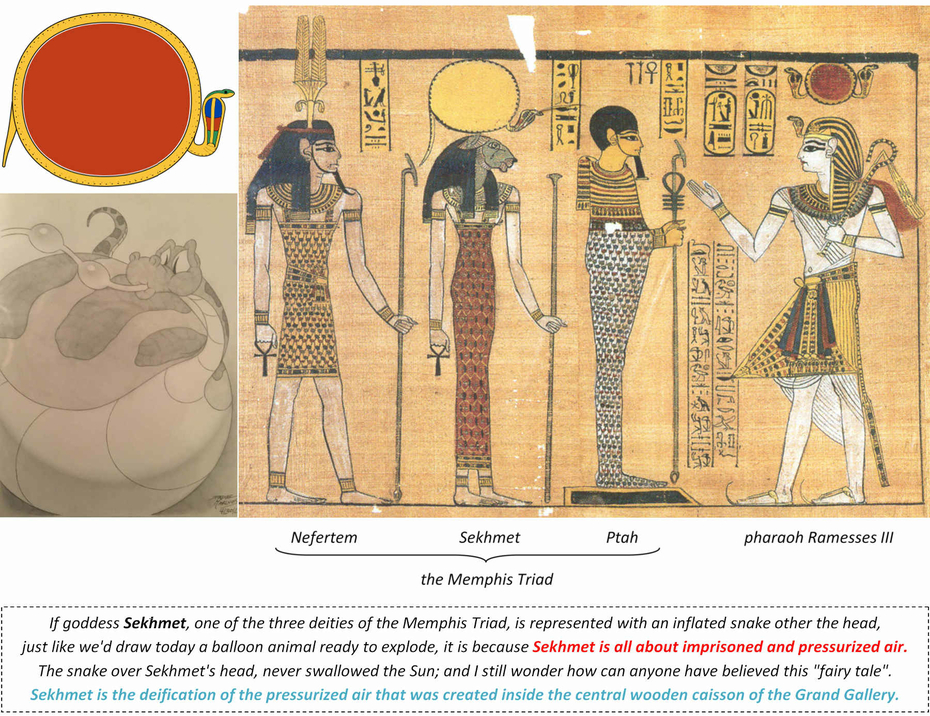
The Pyramids of the Cold Section 27 • The Memphis Evaporative Cold Triad air inflated snake
Publié par Bruno Coursol dans The Pyramids of the Cold le 28/10/2022 à 10:14
Memphis, literally "White Walls", was the first capital of Egypt following its unification by the pharaoh Menes. The people of Memphis believed that their god Ptah, at the heart of ...Lire la suite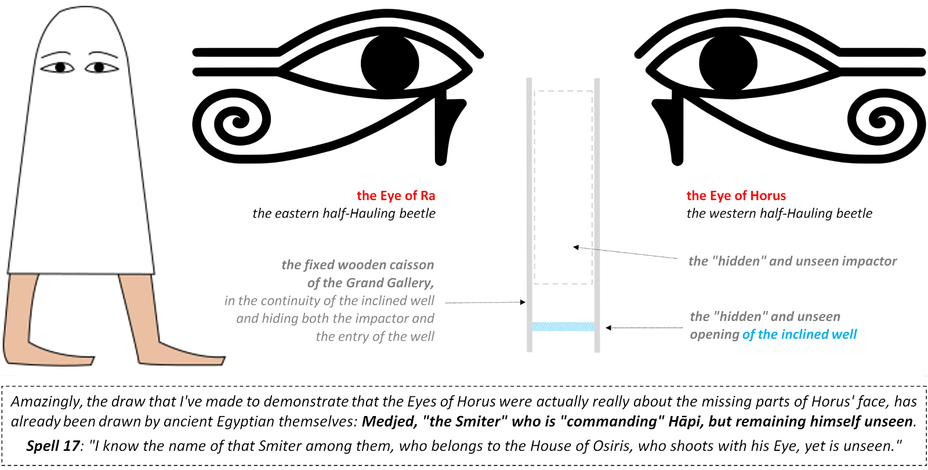
The Pyramids of the Cold Section 26 • The Tree of Life caisson and the Smiter nobody can see
Publié par Bruno Coursol dans The Pyramids of the Cold le 10/10/2022 à 17:15
Medjed is an ancient Egyptian god mentioned in the Book of the Dead, who is described as the "Smiter" (le "Cogneur", le "Frappeur"). Because of his ghost-like portrayal in some ...Lire la suite
The Pyramids of the Cold Section 25 • Two Ladies and the Shen Tow Ring
Publié par Bruno Coursol dans The Pyramids of the Cold le 01/10/2022 à 18:06
We've already seen that falcon headed god of the "sky" Horus was the deification of the composite impactor of the Great Pyramid, and that he was depicted as a falcon ...Lire la suite
The Pyramids of the Cold Section 24 • The Osiris' seed and Horus' opening of the mouth
Publié par Bruno Coursol dans The Pyramids of the Cold le 22/09/2022 à 04:59
If Osiris is the ancient Egyptian god of resurrection, the after-life, fertility and agriculture, it is all explained by the fact that Osiris was the deification of the "power source" ...Lire la suite